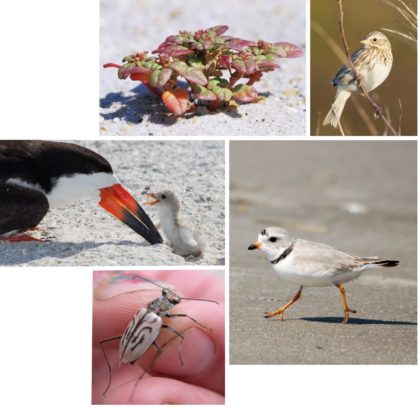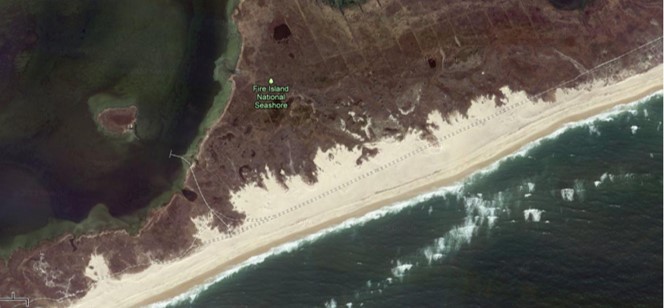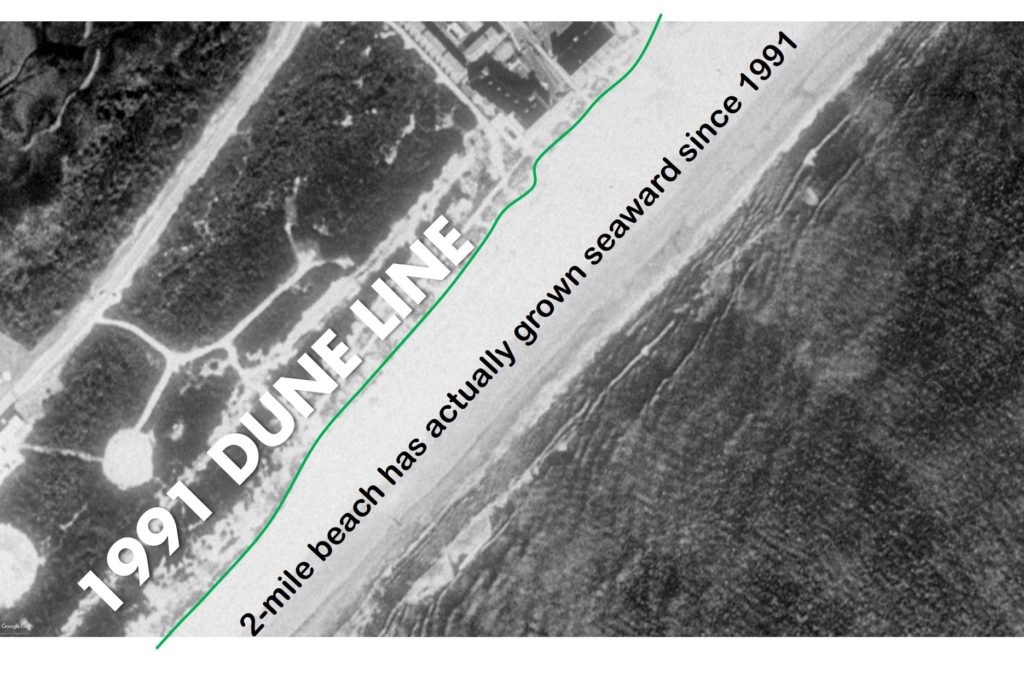
Some of my recent work has focused on understanding the ecology of under-studied coastal species such as Ipswich sparrows and tiger beetles. Thinking about how to manage for these species as well as beach nesting birds has led to the realization that all of these species need storms, tides and winds to re-work their habitats occasionally to ensure that these habitats remain suitable.
For example, piping plover and dune ghost tiger beetle thrive in areas where storms breach dunes to create sparsely vegetated areas that both species prefer for egg laying. Colonial breeding skimmers and terns also prefer sparsely vegetated areas.
“Disturbance” unfortunately has a dual meaning when it comes to managing beach-dependent wildlife. The meaning that might immediately come to mind is human disturbance, in which beach-going people infringe on the ability of wildlife to meet their own needs.
Here I am writing about habitat disturbance caused by natural processes that set back habitat succession.
We are more familiar with habitat succession on land, where an old field might transition into a shrubland and ultimately to forest. We are equally familiar with the idea that fields and shrublands are essential habitat for some species, and that “disturbance” is needed to maintain such habitats.
In an undeveloped coastal landscape, habitats take care of themselves as they are constantly reworked by disturbances large and small.

In the absence of natural disturbance, humans may intervene to actively manage habitat in order to set back succession.
This is precisely the mindset we must adopt to ensure that enough habitat is available for beach and dune species, particularly in New Jersey where so much of the shoreline is already under intensive management to protect human infrastructure.
This protection mindset seeks to create a dune and beach system that is as stable as possible: good for beach-front homes, but not necessarily for wildlife.
For example, the jetty at Cape May Inlet causes sand to accumulate at the south end of Wildwood, including at Cape May National Wildlife Refuge’s Two-Mile Beach.

Here the dune line has actually been growing outward toward the ocean. The dune itself is mature and stable, with no evidence of dune breaches and there is dense vegetation all the way down to the tide line. This has resulted in very little space for nesting birds, and indeed, piping plover no longer nest there.
At Assateague Island, a project intended to prevent storm overwash had dramatic effects on vegetation and the distribution of plover nests. The lack of overwash allowed the dune vegetation to mature and nesting plover were pushed out to the beach front where the only suitable habitat remained. Later intentional breaches were cut in the dune to mitigate this impact.Recently some shore protection projects have sought to marry the needs of wildlife with the need to protect shore towns from storms and flooding. For example, at Cape May the Army Corps of Engineers built a massive beach and dune system along an undeveloped stretch of shoreline.
Initially the project succeeded in both of its goals, with beach nesting birds thriving and the coast protected. But in a short time the robust design and high elevation of the beach berm and dune prevented any kind of storm disturbance.As at Assateague, the result was the maturation of vegetation that had made the area increasingly unsuitable for beach-nesting birds.
Fortunately there is a solution to this tension between managing for stability and for habitat dynamics: active management.
The key to active management for beach-dependent species is that it must be recurrent. Just as a field must be continually managed for bobwhite quail, moving sand and clearing vegetation for beach wildlife needs to be an ongoing activity rather than a one-time action.
This idea is beginning to gain traction. For example, I was part of a Hurricane Sandy resilience project led by NJ Audubon that sought to create flood-resistant nesting habitat at Stone Harbor Point using on-site sand. The site is a large natural area, but most of its extent is either too frequently flooded or too densely vegetated for beach-nesting birds.
The resulting elevated areas attracted many pairs of American oystercatchers along with skimmers and terns.
This management approach shows great promise, but in this case, funding has not allowed for recurrent management and these elevated areas have now disappeared as result of storms and tides.
This outcome is not unexpected because these areas were not designed for stability (again, because stability leads to overgrowth of vegetation).
Elsewhere in New Jersey, management efforts to set back beach vegetation succession in Cape May and Barnegat Light are just underway.
Much still remains to be learned about the most effective management techniques. We also need new strategies to fund the work on a recurrent basis. Tackling both these challenges will be critical for the long-term viability of beach-dependent wildlife populations.
If you’d like to read more about this topic, a new study examines nationwide data on habitat change and piping plover populations. It makes the case that piping plover are dependent on disturbance and that management offers the opportunity to increase their populations. Read it here.